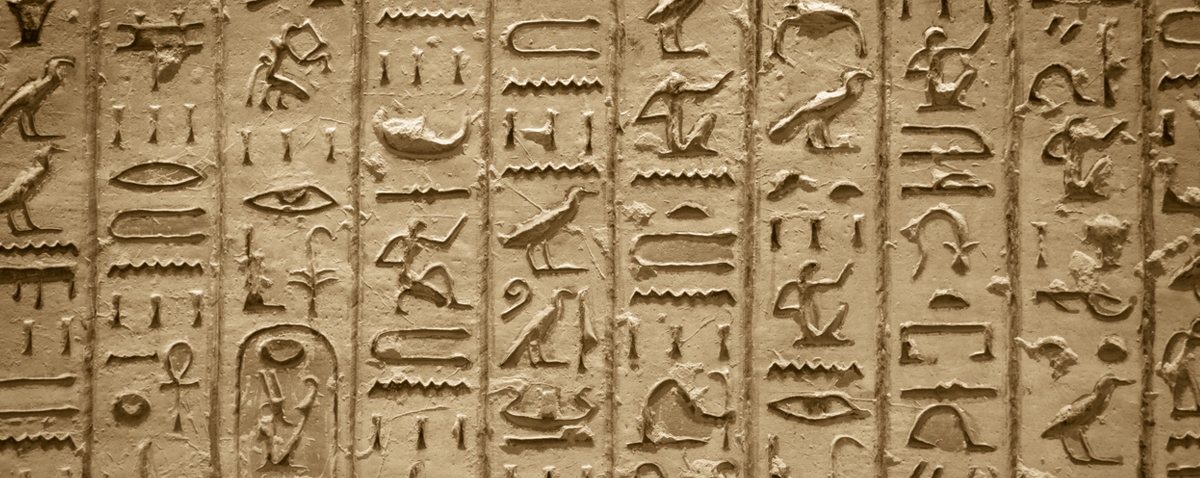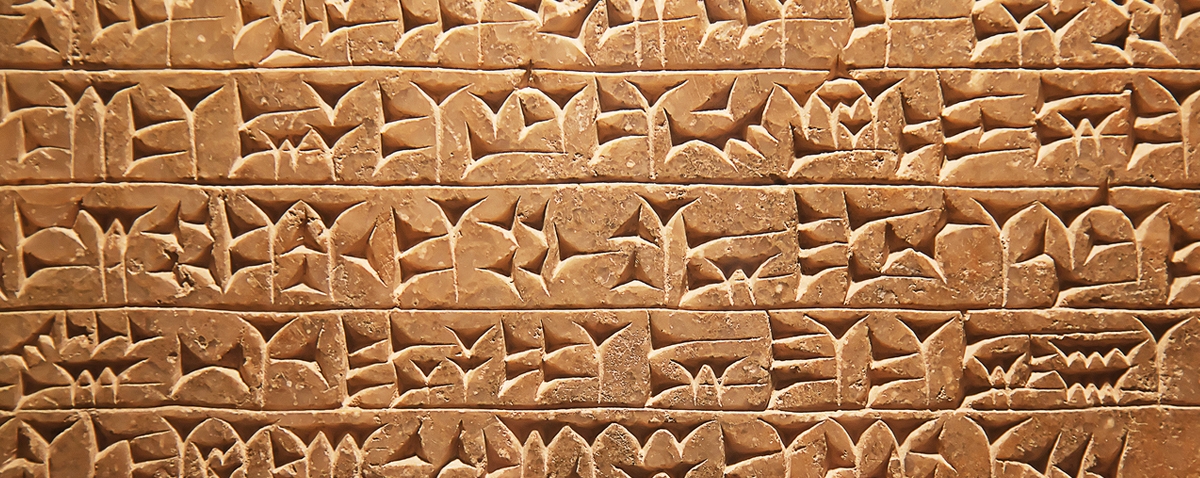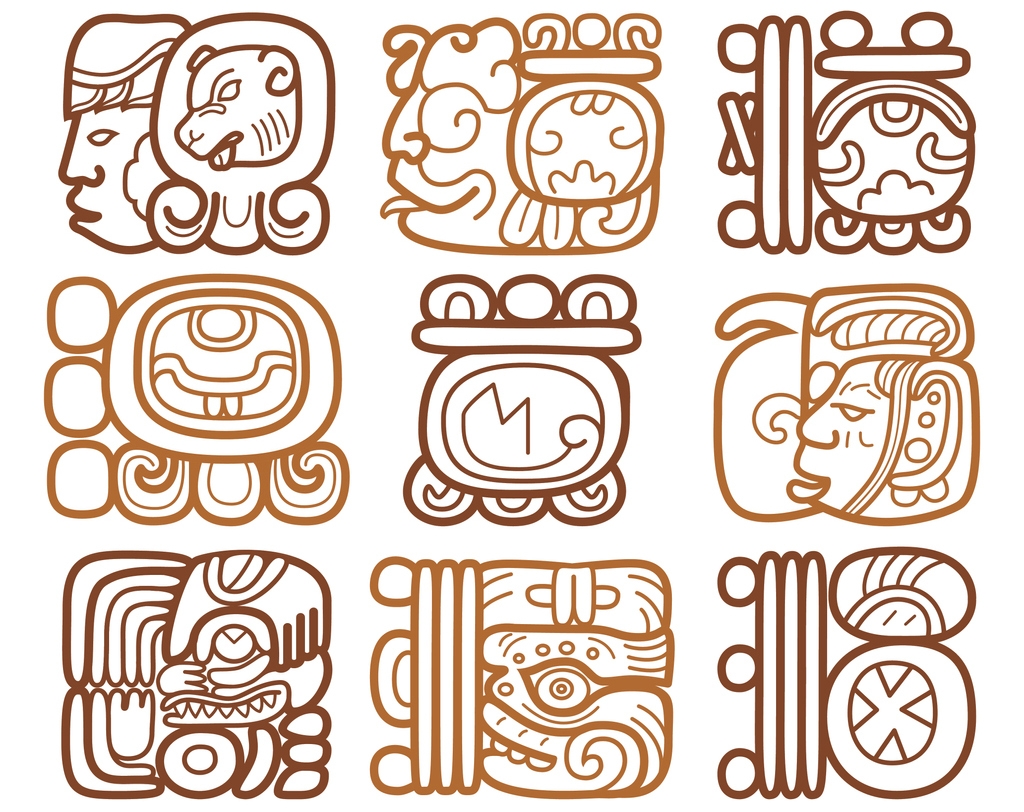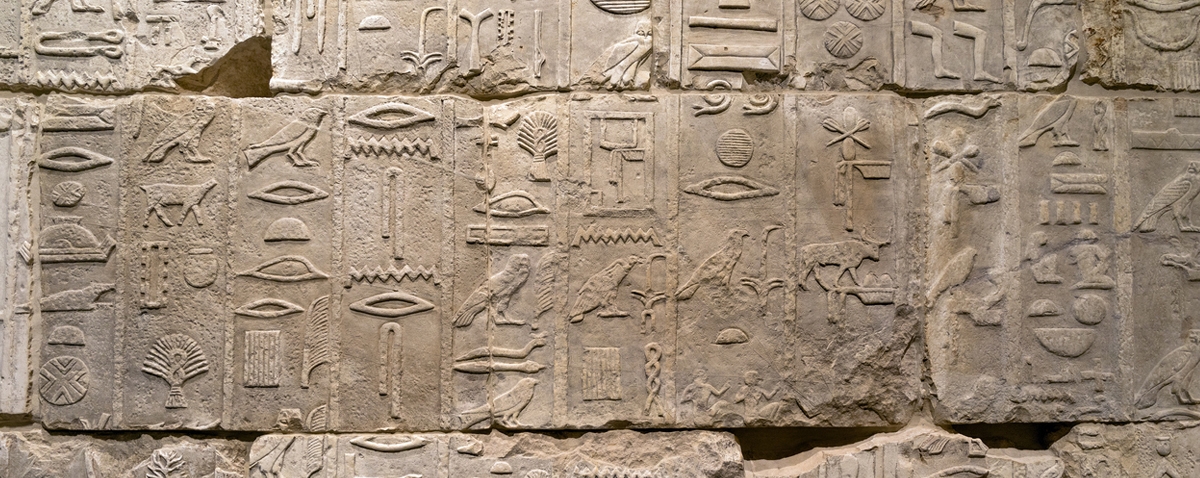Background
Have you ever wondered how and where the written word was invented? It is a thought that strikes the mind of many. According to Dr. Mehrabian, writing represents at least 7% of human communication and we are surrounded by a world of words. As such, it is only fair that we explore this extremely significant part of our society in depth and try to understand its origins and development.
Writing is a form of human communication that involves the use of language that is represented by written symbols. The history of the written word is very fascinating and stretches well back to 3300 BC where it was first developed in present day Iraq, also known as Mesopotamia. One of the many motivations for the development of writing came about when complexities of the world outgrew the human memory, and therefore, it became necessary to write down information that was important and needed to be preserved.
Interestingly enough, writing systems have been invented independently at least four times around the world at varying periods in human history. These writing systems exist in two types, each with their sub-types which is quite interesting as we are only used to English and other similar languages such as Finnish and Spanish which are phonographic systems.

A stack of books

Rock-carved writing

Chinese calligraphy

A person writing on a notepad
You may have an idea about the functions of writing but if explored in depth, one realizes the immense significance of writing in our world, especially the contemporary world. Imagine how different life would be if all the words on the Earth vanished. Out of the many outcomes of such an outlandish world, education and academia would be one of the many aspects of our society that would see a very devastating effect as literacy and the written word have a clear correlation.
Apart from the impact on education, many industries would also be affected such as books, e-books, and all such industries that are related with the written word. This would also have disastrous effects on the economy of the world. Our society is built upon the written word and trying to comprehend the explosion of the written word would do justice to the significance that writing holds.
This interesting article that you are about to read will probe into all the thought-provoking ideas that we have discussed above. Let us say this: this article is heaven for those who are trying to understand the what, why, when, where, who, and how of the written word. You are in for an eye-opening ride, ladies & gentlemen.
History
History, on the face of it, may be a boring topic for many of our readers but let us assure you that this section will not bore you. The history of writing is enthralling, to say the least. Let’s dive deep into the written word’s history.
As we discussed above, writing was developed at least four times around the world independently with no clear links between these developments according to many scholars. Each region adopted writing at varying times for different motivations and reasons. In this section, we will discover the origins of writing by examining a few important regions of the world and how writing was adopted.
Mesopotamia
This is the point zero of writing. There is a consensus among the scholars that the earliest form of writing appeared in Mesopotamia which is present-day Iraq almost 5,500 years ago. Illustrated signs were slowly replaced with a system of characters that represented the Sumerian language’s sounds, which was the language spoken in Southern Mesopotamia and other languages.
As time moved on (after 2600 BC), these characters were then impressed into wet clay using a reed stylus (the main tool for writing used by the Mesopotamian people) to form wedge shapes, making cuneiform signs. This form of writing i.e., cuneiform signs was subject to improvements over the 600 years as symbols were simplified. It is hard enough to read other languages around the world, let alone trying to read wedge shapes. In fact, 90% of the cuneiform texts are still untranslated and only a small group of people can decipher and read this form of writing.
Similar to the today’s alphabet writing systems, the symbols, instead of being read top to bottom, were started to be read from left to right and horizontally. As such, the symbols were also rotated 90 degrees to match this reading style. Cuneiform is a truly old writing system; the last document in cuneiform was written in 75 AD in an astronomical text. It is, however, shrouded in mystery.
Egypt
New discoveries show that writing was also invented in Egypt around the period when it was invented in Mesopotamia. Scientists have discovered large-scale ceremonial scenes at a rock art site in El-Khawy that is dated to be from around 3200 BC. These rock-carved signs are similar to the early hieroglyphic symbols (“sacred carvings” — carved & paintings of letters) and some of these signs were quite large, being at least half a meter in height.
What’s more is that Egyptian hieroglyphic symbols were also discovered that were written on ivory tablets and these were dated around 3200 BC and onwards. Scientists have also agreed on the fact that Egypt was where writing in ink with pens and brushes was carried out. It has also been seen that the carvings and letters i.e., characters are dated to be in periods not so apart which implies that such writing had a couple of purposes in Egypt: one being ceremonial with carved scripts and two was for royal and temple administration which was written.
The Egyptian hieroglyphs and Hieratic (a writing system with cursive letters in Ancient Egypt) was properly developed and had 24 alphabets that contained few consonants, components that represented sounds or combinations thereof, and determinative signs which represented certain meanings but not necessarily sounds. This is where things started to get interesting: the turning point — the alphabet was also developed from this writing system around 1850 BC onwards.
China
China manages to pop up in almost everything important and it is the same case for its role in the rise of writing. The early form of writing systems was discovered in an area called Anyang which is 500km south of the Capital, Beijing. The Shang dynasty has called it their capital and performed certain rituals using animal bones.
The fragments of such animal bones were sold by farmers advertised as ‘dragon bones’ which were used for medicinal purposes. In 1899, Yirong recognised some of the carved characters on these bones. He had come across the earliest examples of written records of Chinese civilization.
More than 100,000 examples of such bone were found which are also called ‘oracle’ bones and had more than 4,500 characters and symbols, some of which are still used. However, the majority of the characters on these oracle bones remain undeciphered. These examples show that the characters were gradually made better, simplified, and compound. These bones show that a complete writing system existed at that time which is fascinating how independently it was invented.
Mesoamerica
Aside from Mesopotamia, Egypt, and China, recent discoveries have come up with evidence that the written word also existed in Mesoamerica which is an area that runs from Southern Mexica to Costa Rica around 900 BC.
Evidence shows that there were two types of writing systems that existed in pre-colonial Mesoamerica. One was open systems where text that was recorded had no connection with the grammatical and sounds of certain languages that existed at the time. These systems acted as mnemonic devices which guided the readers through the text narratives without any link to the linguistics. Such systems were common among the Aztecs and other Mexica communities.
On the other hand, the closed systems were the opposite of open systems. They had a link with the grammar and sounds of certain languages. Such systems were targeted towards certain linguistic communities. We can still see such systems existing among the Maya.
Today only four such Maya books have endured and less than 20 from the entire region. These characters were painted onto deer skin and barks of trees. However, much of the written word from the period of Mesoamerica remains shrouded in mystery as much of the evidence was burned in the 16th century by the Spanish conquistadors.
Indus River Valley
The Indus Valley located in Pakistan and north-west of India has also played a role in the rise of the written word. Discoveries have been made which show that certain symbols were used, and these symbols may have been written. The symbols used by the society go back to 7000 BC. We have about 5,000 inscribed artefacts but most of them are only four or three signs long.
400 unique symbols were identified; however, scientists claim that they are too low in quantity for a complete word-based writing system. What’s interesting is that these symbols are very similar to those found in the early Sumerian script and Egyptian hieroglyphs. As such, scientists suggest that the Indus River Valley had a combination of logographic and syllabic components in their writing systems similar to the two systems in Egypt and Sumer.
Rapa Nui
This table about the origins of writing gets even more fascinating here. More than 12 wooden tablets with glyphs inscribed on them were discovered in Rapa Nui also known as Eastern Island in Polynesia in the 19th century. The possible meaning of these inscriptions given by the missionaries at that time was that these were lines for chanting out. However, the knowledge of the usage of these tablets had been lost by the 19th century.
These characters on the wooden tablet represented humans, animals, and plants. It was discovered that there are 120 un-joined glyphs which were used to write more than 2,000 characters worth of text and also as short as 2 characters.
The question whether these glyphs were simply a mnemonic device, or a full-fledged writing system of logographic and syllabic symbols is a question that remains unanswered to this day and also the claim that the Rapa Nui was the sixth independent origin of writing.
Writing Systems
It comes as a surprise to many that there are many different writing systems. This section is going to be all about writing systems and their different types. Let’s dive deep into how these systems work and whether they are still in use today.
Writing systems, also called inscription methods, are in five categories: ideographic/pictographic, logographic, alphabetic, and syllabic. We will look at them one-by-one in detail.
Ideographic/Pictographic
Ideographic writing systems use graphemes as ideograms where such ideograms represent certain concepts or ideas instead of being a word in a specific language whereas pictographic writing system is where the script use graphemes which are iconic pictures.
However, linguists DeFrancis and Unger argue that such ideographic or pictographic writing systems do not use language to its fullest and are not able to express all that is possible through a language, i.e., they are limited in use. They also claim that no complete writing system can be fully ideographic or pictographic and must be able to refer to a certain language in order for such systems to utilize their true capacity of expression.
Can you try to remember the last time you came across an ideographic or pictographic writing system? It would be hard to come across such systems nowadays because only a few exist today. Moreover, there is no uniform to read them because there is no certain or specific correspondence between the symbols and language. In many cases, only the author of such writing systems can read properly, and it is said ideographic or pictographic systems are meant to be interpreted not read. Ideographic or pictographic writing systems often work best as mnemonic devices or as pointers for speeches.
Logographic
This is where things start to get complex and interesting. Under logographic writing systems, certain glyphs i.e., symbols/characters actually represent words instead of sounds i.e., phonetics. However—because nothing is as simple as it seems—a logographic script would not only comprise of logograms, but there are also graphemes that also represent phonetics i.e., sound elements and serve different purposes.
Logographic writing systems have further sub-types including consonant-based and syllable-based. Covering this would make things too complicated.
Syllabic
Syllabic writing systems are where a unique symbol exists for a distinct syllable which is a unit of speech made up of a vowel sound or a mixture of both vowel and consonant sounds. For example, ca, ci, co, cu are distinct syllables and can be distinguished in a word. So, the word can-dle has two syllables. A syllabary such as the Mycenaean from 1400 BC has a graph for each of these syllables. Because syllables are easily distinguishable in speech, the earliest forms of sound-based systems were syllabic.
However, a set of syllabic graphs can still be read in a number of different ways and thus would rely on the reader’s knowledge and ability to judge the context and guess work. As such, these syllabic writing systems are not fully explicit, rather far from it.
Alphabetic
So, finally, we have reached the last type of writing system. Try guessing this type of writing system. Well, you might have guessed it right. In this writing system, there is a symbol that represents each consonant and vowel. The alphabetic writing system combines a restricted list of characters to represent spoken language. Although there is no direct correspondence, a combination of letters indicates individual phonemes.
The alphabetic writing system is often found in many European languages but also other regions such as Korea.
Functions of Writing
We have briefly touched upon this topic: the functions of writing. To say that writing is indispensable in our society would still not be enough. Our societies are shaped by, and based upon, writing and a world without the written word would be outlandish and unrecognizable, perhaps even be apocalyptic especially in our times.
The primary function of writing is to communicate across time and space. Communicating through time means that information and knowledge is preserved for certain periods of time, exemplified by the Egyptian hieroglyphics and the cuneiform inscribed in clay. Writing is and was used to store information and perform an archival function. Writing for this purpose is not only used to record and preserving political, religious, scientific, and literary data but also for day-to-day tasks such as maintaining books of accounts and other financial data.
Writing also performs the function of communicating through space, for example, traders carried with them notes or books as they moved from one place to another. Another example of this function is letters, newspapers, etc. Moreover, writing also performs the function of mnemonic device and keeping personal data such as diaries, journals, alike.
In Numbers
If you are not really a fond of all the histories and other text about the written word, this section might be just for you as we will explore the written word in numbers by looking at different statistics that offer us a lot of information about the writing world.
Number of Books Published
Estimating the number of books ever published is a mammoth task. Guess which company was able to come up with a figure for this question. Well, you might have guessed it right, it was Google. Google Books had an attempt at answering this bewildering question using their algorithm (although it had some shortcomings). Well, the number of books ever published according to Google is…drumrolls…129,864,880 books[1]. That is a staggering one hundred twenty-nine million books that have been published. However, even this estimate is understated because it is from 2010 and there has been a significant upward trend of self-published books which are not required to have ISBNs, and these have been ignored in the algorithm.
Source: Buringh and Van Zanden (2009)[2]
The graph above illustrates the phenomenon even more better as it shows great uptakes in the production of printed books, especially in Western countries where the access to printing press was easy.
Source: Warwick (2021)[3]
The figure above shows the number of new titles released in the United States between the period of 2003-2011. It shows a colossal increase in the number of new books by year. This is primarily driven by the fact that self-publishing has become easier due to the internet but also access to publishers has also increased.
Most Printed Book of All Time
Before we give it away, we will let you guess this one—the most printed book of all time. If you have not been able to guess, let us give you a hint, it is a religious book.
You might have guessed it right after that hint. Unsurprisingly, the most printed book of all time is the Holy Bible. The Bible has been printed more than 5 billion times [4] according to Guinness World Records. Apart from the Bible, many other religious texts have millions of copies such as the Holy Quran with more than 800 million copies and the Book of Mormon with 120 million copies.
Some of other best-selling and most printed books are listed below in the table.
| Book | Language | Year of Publish | Sales |
| A Tale of Two Cities | English | 1859 | 200 million |
| The Hobbit | English | 1937 | 140.6 million |
| Harry Potter & the Philosopher’s Stone | English | 1997 | 120 million |
| The Little Prince | French | 1943 | 100 million |
| Dream of the Red Chamber | Chinese | 18th century | 100 million |
| And Then There Were None | English | 1939 | 100 million |
Source: Wikipedia[5]
E-Books Market
With rising wide accessibility to digital platforms, the e-Books market has expanded rapidly. The fact that you are reading this article on a digital platform would not have been possible 40 to 50 years ago and most likely have read something about the explosion of the written word in a newspaper article.
Let’s look at the e-books market and some of its statistics so that we can appreciate its rising dominance in the writing world.
Source: Statista[6]
Source: NPD[7]
All these graphs above indicate one thing: e-Books are on the rise and the market is rapidly expanding. Market intelligence reports indicate that the e-Books market has seen a compounded annual growth rate of 3.62% between the periods of 2019-2026 with North America being the largest market. And the market eyes larger growth each year.
The Audio Books Market
The audio book market is becoming a large one, especially in recent years. In 2019, the global audiobooks market was valued at 2.67 billion US dollars and is expected to grow at a compounded annual rate of 24.4% between 2020 to 2027 to reach up to 15 billion US dollars in 2027.
Source: Statista [8]
The graph above shows the rising number of audiobooks published each year as self-publishing and demand for audiobooks rises.
Source: Gaille (2018) [9]
The graph above also shows the rising trend of audiobooks in the United States with the share of adults who have listened to an audiobook in the last 12 months rising up to 18% in 2018 from a 11% figure in 2011.
Significance of the Written Word
Throughout this article, we have maintained a central idea: writing is imperative, and you may also agree with this notion. Sometimes, we tend to underappreciate the significance of the written word. Let’s shed some light on this topic.
Writing allows us to communicate across time and space as the information is now preserved instead of being a part of someone’s memory. Without writing, information stored in human memory may fade away or even become distorted, leading to misinformation and therefore ineffective communication.
On top of this, writing has allowed us to express complex ideas in a way that is understandable to others. For example, sophisticated theories of physics or mathematics would not be easy to understand if told verbally – at least with writing, they become a bit easy to understand. In addition to this, writing allows us to make our thinking, ideas, and learning visible and permanent.
However, let’s zoom out a bit. The invention of writing is fundamental for the development of civilization. Without writing, no trade records could be kept, no tax or accounting could be made, no administration could be conducted, no laws could be developed and enforced, and knowledge would become tough to transmit and broadcast.
The bottom line is that the written word has allowed societies to grow and civilizations to develop.
20 Interesting Facts About Writing
- Writing was invented four times independently at varying times and places.
- There are four types of broad writing systems.
- The earliest writing ever discovered is 5,500 years old.
- Our writing systems and way of writing are constantly evolving with time and our needs.
- Instead of letters, people used pictographs i.e., pictures to represent their thoughts.
- Sumerian was the first ever written language.
- Printing press played an instrumental role in the development of writing.
- The Greek Alphabet was the first ever proper alphabet.
- Hieroglyphs were used by the Egyptians to write.
- More than 1 million books are printed in the United States each year alone.
- Sentences nowadays are only 15 to 20 words in length.
- Average sentence length in the 16th century was 70 words.
- The longest sentence ever written was 1,288 by William Faulkner.
- Cuneiform writing system used wedge shapes to communicate.
- A typical book has around 70,000 to 80,000 words.
- There are around 50 genres of books in total.
- U.S. book retailers sold around 1.1 billion US dollars’ worth in 2021 alone.
- The most printed book of all time is the Bible.
- The first form of writing was developed to communicate basic information about crops and taxes using pictographs in Mesopotamia.
- Writing is the primary measure of judgement for one’s intellect, work, and learning.
References
[1] How Many Books Have Ever Been Published? (2016, September 9). Mental Floss. Retrieved December 30, 2021, from https://www.mentalfloss.com/article/85305/how-many-books-have-ever-been-published
[2] Eltjo Buringh and Jan Luiten Van Zanden (2009) – Charting the “Rise of the West”: Manuscripts and Printed Books in Europe, a Long-Term Perspective from the Sixth through Eighteenth Centuries. In The Journal of Economic History The Journal of Economic History Vol. 69, No. 2 (Jun., 2009), pp. 409-445.
[3] Warwick, M. (2021, January 31). Would you believe how many books are published every year in the U.S.? Mal Warwick On Books. Retrieved December 30, 2021, from https://malwarwickonbooks.com/published-every-year/
[4] Guinness World Records. (n.d.). Best-selling book. Retrieved December 30, 2021, from https://www.guinnessworldrecords.com/world-records/best-selling-book-of-non-fiction
[5] Wikipedia contributors. (2021, December 29). List of best-selling books. Wikipedia. Retrieved December 30, 2021, from https://en.wikipedia.org/wiki/List_of_best-selling_books#More_than_100_million_copies
[6] Statista. (2021c, October 19). Digital Market Outlook: e-publishing revenue in the U.S. 2017–2025, by format. Retrieved December 30, 2021, from https://www.statista.com/statistics/455734/digital-publishing-revenue-format-digital-market-outlook-usa/
[7] Chojnacki, R. (2021, October 6). With More Bookstores Open, Soaring E-books Sales Fall Back to Earth, NPD Says. NPD Group. Retrieved December 30, 2021, from https://www.npd.com/news/press-releases/2021/2021-ebook-sales-data/
[8] Statista. (2021b, June 7). Number of audiobooks published in the U.S. 2007–2020. Retrieved December 31, 2021, from https://www.statista.com/statistics/261185/number-of-audiobooks-published-in-the-us/
[9] Gaille, B. (2018, June 27). 17 Audiobook Industry Statistics and Trends. BrandonGaille.Com. Retrieved December 31, 2021, from https://brandongaille.com/17-audiobook-industry-statistics-and-trends/















